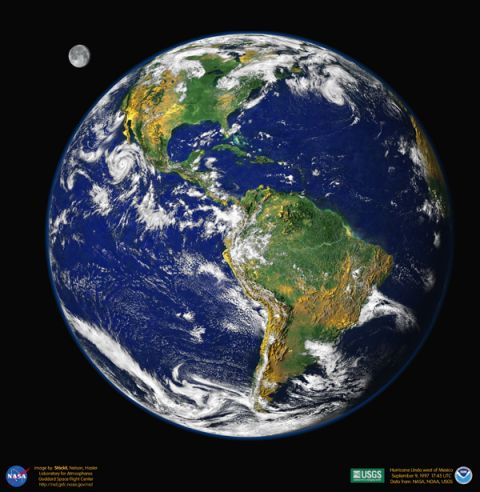 |
Back to my Ocean Literacy Web Page Back to Cynthia Cudaback's Web Page |
 |
| Science Content | Stewardship Content |
| Science Attitudes | Stewardship Attitudes |
The Science Attitudes Quadrant The most rigorous educational research has been conducted in this quadrant. Well known and validated surveys include Views of the Nature of Science (VNOS, Lederman et al, 2002), Views About the Study of Science (VASS, e.g. Halloun et al 1985, 1998), and the Colorado Learning Attitudes about Science Survey (CLASS, Adams et al, 2006). None of these surveys is specific to earth or ocean science; CLASS is actually specific to physics (and makes repeated mention of problem sets). I have used a small subset of the CLASS questionnaire, replacing the word "physics" with "oceanography".
The Science Content Quadrant Although educational research has been conducted in physics and chemistry for a decade or more, relatively few studies have been done in the earth sciences. The Earth Science Literacy Test (ESLT, De Laughter et al, 1998) is a qualitative survey used in a few classes. The Geoscience Concept Inventory (GCI, Libarkin, 2001) is a thoroughly validated quantitative survey. Development of the GCI required the cooperation of dozens of earth science faculty around the country, making a careful progression from open-ended qualitative questions that reveal what the student is really thinking to valid, multiple choice, quantitative questions that can be applied easily to large groups. No analogous survey exists in oceanography, but I am trying to develop one.
The Stewardship Attitudes Quadrant This is the domain of public opinion surveys. Most of the published results are from telephone surveys of over 1000 adults, but little information is available about the validity of the surveys themselves (Belden et al, 1999(abc); AAAS, 2004; Coyle, 2005; Steel et al, 2005). In general, these surveys reveal a high level of concern but not the understanding needed to act on that concern.
My learning objectives in the stewardship attitudes quadrant are: 1) students should feel responsible for the well-being of the ocean, 2) students should feel empowered to act for the well-being of ocean and 3) students should be able to list specific actions they are willing take to help the ocean. Although I include a list of possible actions here, I suspect that students are more likely to take actions that they choose themselves. For my class surveys, I ask the students to volunteer a list of ways their actions affect the ocean; that question is listed in the Stewardship Content Quadrant.
The Stewardship Content Quadrant This quadrant has has been relatively under-served. Content questions that relate to human impacts are often included in public opinion surveys but there may be as few as five content questions in a 65-question survey (Belden et al, 1999). Analysis of these surveys reveals that small soundbites of content information can have a significant effect on public attitudes. For example "all water leads to the ocean" (NEETF, 2005), and "the amount of used motor oil dumped in storm drains each year is 15 times as much as the Exxon Valdez oil spill" (Belden et al, 1999). Steel et al (2005) surveyed public understanding of coastal management practices, but I don't find their questions interesting.
Many educators and texts claim to place a high priority on stewardship, but the teaching approach tends to be scattershot Specific discussions of human impacts appear only in the last chapter of the most popular textbooks, and it seems to be up to the professor to insert whatever stewardship content s/he considers appropriate into a primarily scientific course. By breaking out these topics explicitly, I hope to highlight the importance of these questions, and also encourage oceanography instructors to provide more specific guidance on how students can help the ocean. Non-profit conservation organizations provide several suggestions (at the "small steps" level, NEETF, 2005); links are included in that quadrant.